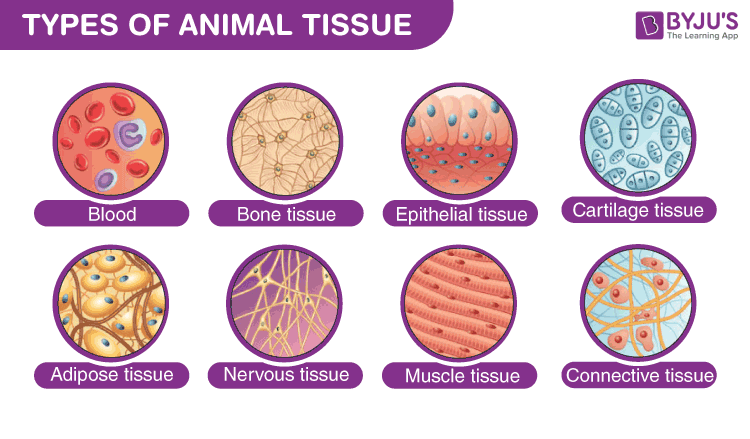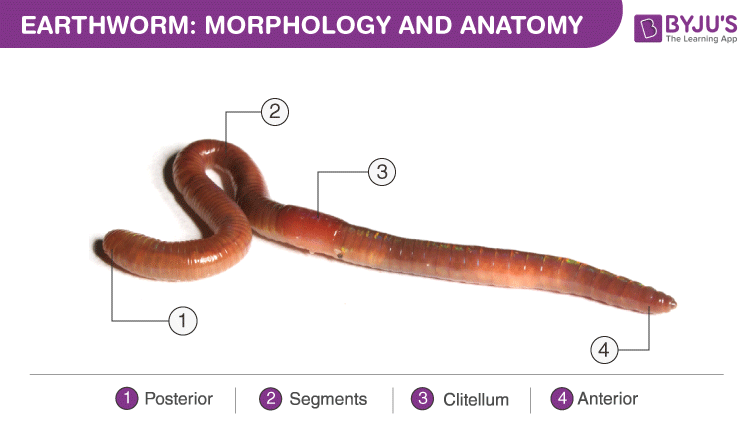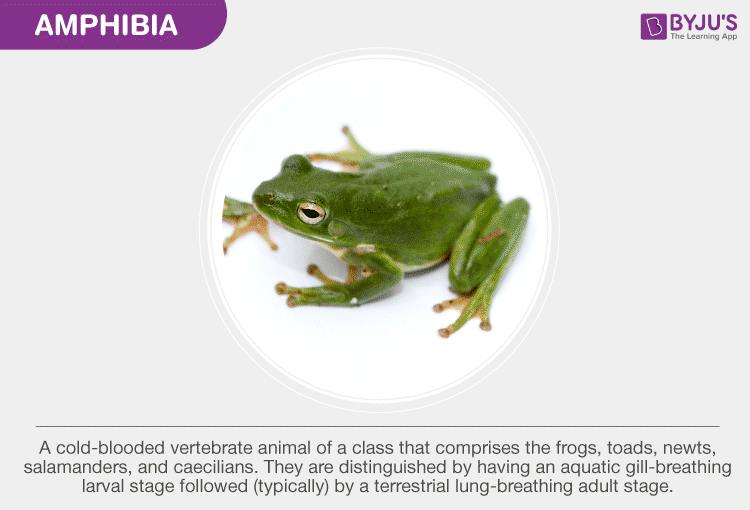The human body comprises billions of cells performing a multitude of functions. In multicellular entities, a group of similar cells, along with intercellular substances, perform a particular function, which is termed a tissue. These tissues form organs which in turn form the organ system. Understand in detail about this organization through Structural organization in animals notes provided here.
Chapter 7 Structural Organization in Animals Notes:
Topics Covered in Structural Organization in Animals
- Animal Tissues
- Organ and Organ System
- Structural Organization of Frog
- Structural Organization of Earthworm
- Structural Organization of Cockroach
Animal Tissues

For more information on Animal Tissues, watch the below video

Since the structure of cells varies as per their functions, tissues can broadly be classified into the following:
Epithelial tissue – These tissues have a free surface and are compactly arranged with very little intercellular matrix. There are two types of epithelial tissues:
- Simple epithelium – A single layer of cells functioning as a lining of body cavities, ducts and tubes. Based on structural modifications of cells, they are further classified into three types – squamous, cuboidal and columnar
- Compound epithelium – It consists of two or more layers and protects the skin.
Connective tissue – They are the group of tissues which functions by linking and supporting other tissues and organs of the body. Thes include soft connective tissue, cartilage, bone, adipose and blood. These fibres provide strength, elasticity and flexibility to the tissues. These tissues can furthermore be classified into – loose connective tissue(Aerolar and adipose tissues), dense connective tissue and specialized connective tissue.
Muscular tissue – Muscles consist of several long and tube-shaped fibres, which are arranged in parallel arrays. These tissues are composed of numerous fine fibrils known as myofibrils. They bring about the movements of the body. These are three types –
- Skeletal muscles – They are muscle fibres which are bundled together and closely attached to the skeletal bones.
- Smooth muscles- They are involuntary muscles consisting of narrow spindle-shaped cells with a single and centrally located nucleus. They are narrow at both ends and do not show striations. The cell terminals hold them together and are bundled in a connective tissue sheath. They line the internal organs such as blood vessels, intestine, stomach and the intestine.
- Cardiac muscles – They are involuntary muscle and contractile tissue found in the heart. The cell terminals fuse the plasma membrane of these cells and make them stick together.
Neural tissue – Neurons (nerve cells) are a unit of the neural system and are excitable cells constituting the neural system, providing protection and support.
Read More, Animal Tissue – Epithelial and Connective Tissue
Structural Organization of Earthworm

These are terrestrial invertebrates, reddish-brown in colour, found in the upper moist layer of sand. They can be easily located by their faecal deposits, known as worm casting. Common Indian earthworms are Pheretima and Lumbricus
- They have a long cylindrical body, and the body is divided into more than a hundred short segments known as metameres.
- The dorsal blood vessel is represented by a dark medium mid-dorsal line situated in the dorsal side of the body, while the ventral side is characterized by the presence of genital openings.
- The anterior end has the mouth and the prostomium, which is a lobe serving as a mouth covering, while the prostomium is sensory in function. Persitomium is the first segment containing the mouth.
- Clitellium covers the 14-16 segments in an adult worm, and the body is divided into three segments – preclitellar, clitellar and postclitellar segments.
Structural Organization of Cockroach
They are black or brown-bodied animals categorized under Phylum Arthropoda. They have a long antenna, legs and flat extension to the upper body wall concealing the head. The adults of the common species of cockroach are about 35-53 mm long, with wings extending beyond the tips of the abdomen in males.
- Their body is segmented into three distinct regions – head, thorax and abdomen. The complete body is covered by a hard chitinous exoskeleton.
- The exoskeleton in each segment has sclerites(hardened plates) which are joined to each other by a thin and flexible articular membrane (Arthrodial membrane)
- The triangular-shaped head lies anteriorly at right angles to the longitudinal axis formed by the fusion of six segments. The head has a pair of compound eyes.
- A pair of thread-like antennae(having sensory receptors) emerge from membranous sockets present in front of the eyes.
- Mouthparts consist of the labrum, a pair of mandibles, a pair of maxillae and a labium. A median flexible lobe serving as a tongue lies enclosed within the cavity by the mouthparts
- Thorax consists of the – prothorax, mesothorax and metathorax. Each of the thoracic segments has a pair of walking legs.
Structural Organization of Amphibia -Frog

Frogs are amphibians belonging to Phylum Chordata. The most common species in India is Rana tigrina. They are cold-blooded and exhibit camouflage. In order to protect themselves from extreme hold and cold, they take shelter through summer sleep and winter sleep.
They have smooth and slippery skin due to the presence of mucus and absorb water through the skin. Their body is divisible into a head and trunk, where a neck and tail are absent. A pair of nostrils are found just above the mouth with bulged eyes covered by a nictitating membrane protecting them in water. The tympanum present on either side of the eye receives sound signals. The forelimbs(ending in four digits) and hindlimbs(ending in five digits) enable them to swim, walk, burrow and leap. They exhibit sexual dimorphism.
The body cavity of amphibians includes diverse organ systems with well-developed structures and functions. The organ system of a from includes:
- Nervous system
- Digestive system
- Excretory system
- Circulatory system
- Respiratory system
- Reproductive system
Stay tuned with BYJU’S to learn more about the Structural organization in animals and other related terminologies.
Related Links:
NCERT Solutions for Class 11 Biology Chapter 7 Structural Organisation in Animals
Frequently Asked Questions on CBSE Class 11 Biology Notes Chapter 7 Structural Organization in Animals
What are the different types of animal tissues?
The animal tissues are divided into epithelial, connective, muscular and nervous tissues.
What is an amphibian?
Amphibians are animals that can live both on land and in water.
What is the structural organisation of animals?
In multicellular animals, a group of similar cells, along with intercellular substances, perform a specific function. Such an organisation is called tissue.

Comments